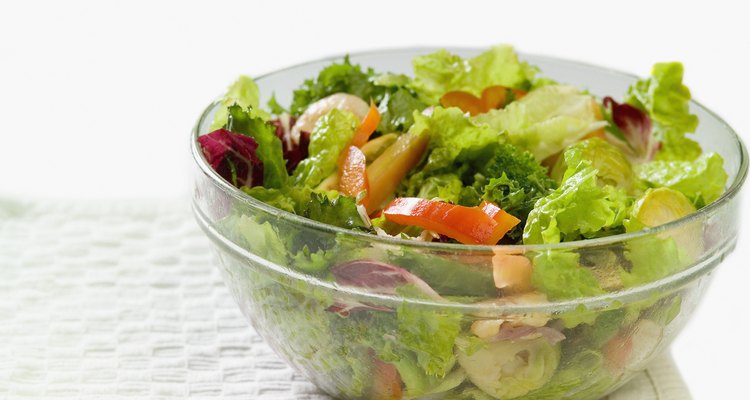
Frozen cooked shrimp is not only convenient, but it's usually a better product than fresh shrimp. Most "fresh" shrimp has actually been frozen and thawed. Still, you should treat frozen cooked shrimp fish with care, as you would any seafood product. Start by buying it from a reputable fish seller and keep it frozen for up to five months.
Where in the World?
The first thing to consider when buying fully cooked, frozen shrimp is where the shrimp came from. Most of the shrimp sold in the U.S. is imported, but the imported shrimping industry isn't well regulated. With the exception of regulated shrimp farms in Thailand that use recirculating systems, shrimp caught and processed in Asia is sometimes contaminated with harmful chemicals, antibiotics and even mouse hair, rat hair or insect parts. Shrimp from the Gulf of Mexico may contain oil residues. To be on the safe side, look for shrimp caught wild in the U.S., particularly shrimp from the Pacific Northwest. The U.S. shrimping industry is more heavily regulated, so you know the shrimp was caught using environmentally sustainable practices. This shrimp is also free from the contaminants sometimes found in imported shrimp. Shrimp labeled with certification from the Best Aquaculture Practices, Marine Stewardship Council or Wild American Shrimp have been inspected by an independent agency and are certified to be clean and antibiotic-free.
At the Fish Counter
Pay attention to how the shrimp is packaged to ensure a high-quality product. Avoid packages that have ice crystals in them, an indication that the shrimp has been thawed and refrozen. The shrimp should be bright pink with firm flesh and a mild odor. Ignore adjectives, such as "jumbo" or "extra-large" shrimp, which have no meaning. Instead, look for a number indicating the shrimp count per pound to get a true idea of the shrimps' size. For example, the bag may say "21 to 25 count." These shrimp are larger than those in a bag labeled "31-35 count." The lower the number, the larger the shrimp. Choose the right size for your recipe and purpose. For grilling, choose large shrimp in the "21-25 count" range. For salads or soups, choose small shrimp with a "60-65 count" label.
Safe Thawing
Shrimp retains the most quality when it's thawed slowly. Thaw frozen shrimp in the refrigerator overnight or place the frozen shrimp in a bowl of cold water in the kitchen sink. Most cooked frozen shrimp has been deveined, but if not, you can use a small paring knife to gently remove the black vein at the top of the shrimp. This vein is the digestive tract, and although it's harmless, it's a bit unappetizing.
Safe Handling and Cooking
Use the same precautions when handling frozen cooked shrimp as you would any other meat or seafood product. Wash your hands with warm, soapy water before and after you handle the shrimp. Wash cutting boards and counter top surfaces, as well. Keep the cooked, frozen shrimp separate from raw meats and seafood. Shrimp spoils quickly, so place it on ice if you're serving it cold, or use chafing dishes to keep hot shrimp hot. Refrigerate any leftovers within two hours of serving. Reduce this time to one hour in hot weather. Use the refrigerated leftovers within four days.
Related Articles
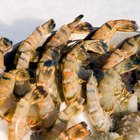
Tiger Prawns vs. Shrimp
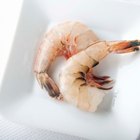
Jumbo Shrimp Nutritional Facts

How Long Can Shrimp Be Refrigerated?
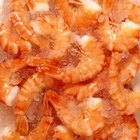
How Can You Tell If Frozen Shrimps Are ...

How to Cook Steak & Shrimp in a Skillet
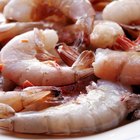
How to Tell if Shrimp Is Not Fresh

How to Thaw Frozen Cooked Shrimp Quickly

How to Cook Frozen Shrimps That Still ...
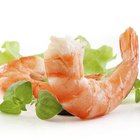
How to Steam Shrimp in a Rice Cooker

How to Cook Frozen Jumbo Butterfly ...

Are Farm Raised Mussels & Clams Healthy ...
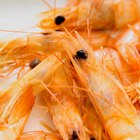
How to Prepare Live Shrimp
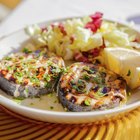
How to Grill and Smoke Swordfish
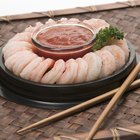
What Is the Dark Line on a Boiled ...

How to Cook Shrimp Scampi in a Crockpot

How to Cook Shrimp to Serve Chilled
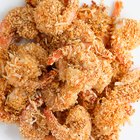
How to Make Coconut Shrimp
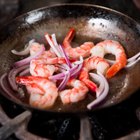
How to Cook Shrimp in a Skillet

How to Keep Shrimp Cocktail Cold on a ...
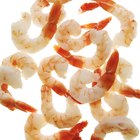
How to Cook Shrimp in Beer
References
Writer Bio
Julie Christensen is a food writer, caterer, and mom-chef. She's the creator of MarmaladeMom.org, dedicated to family fun and delicious food, and released a book titled "More Than Pot Roast: Fast, Fresh Slow Cooker Recipes."
Photo Credits
Medioimages/Photodisc/Photodisc/Getty Images